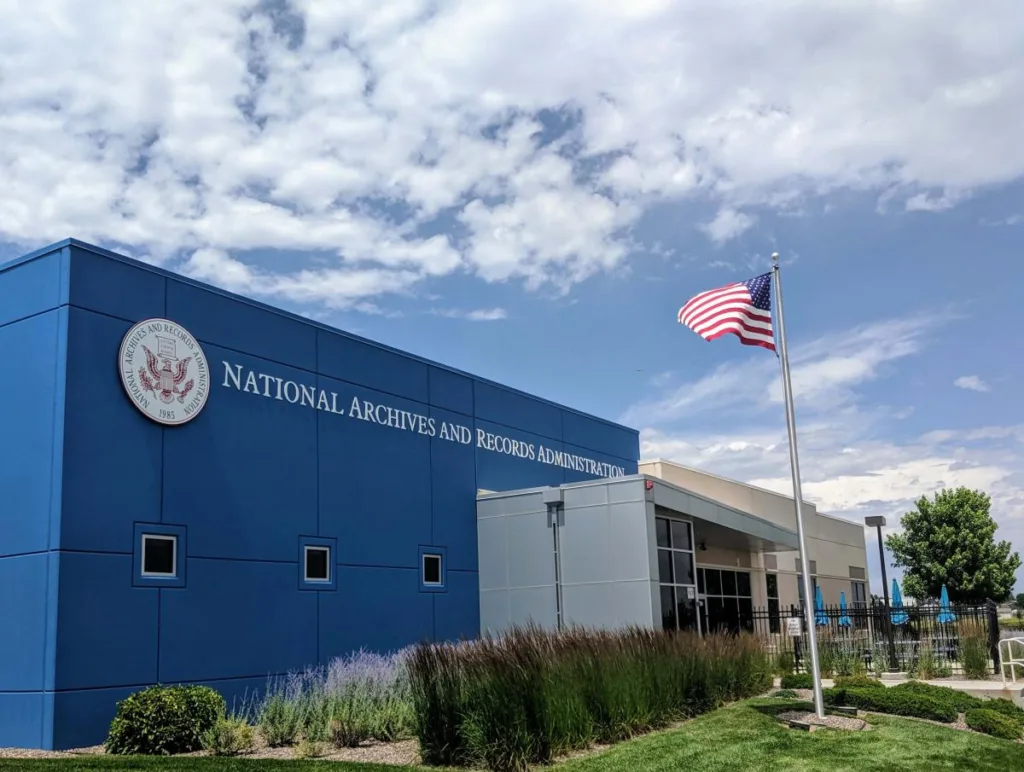In today’s digital age, the protection of sensitive information is of utmost importance. Government agencies and organizations handle a vast amount of data that falls under the category of Controlled Unclassified Information (CUI). It is essential to understand what CUI is and why its destruction is crucial in maintaining security and compliance.
CUI refers to government-created or owned information that requires specific safeguarding and dissemination controls in accordance with applicable laws, regulations, and government-wide policies. It is important to note that CUI is not classified information, but it still holds significant value and sensitivity.
The goal of destroying CUI is to ensure that this information is permanently and irretrievably eliminated, minimizing the risk of unauthorized access or disclosure. By destroying CUI, organizations can mitigate the potential harm that could occur if this information were to fall into the wrong hands.
To maintain consistency and adhere to established standards, the National Institute of Standards and Technology (NIST) has provided guidelines for the destruction of CUI. If the applicable authority does not specify a particular method, NIST recommends following the guidelines outlined in SP 800-88, known as the Guidelines for Media Sanitization.
According to SP 800-88, the minimum standard for shredding CUI is to reduce the information to particles that measure 1mm x 5mm. This level of destruction ensures that the data is rendered unreadable and virtually impossible to reconstruct. Shredding is just one method of destroying CUI, but it is widely accepted as an effective approach.
It is essential to highlight that the destruction of CUI should not be seen as an attempt to conceal any unauthorized disclosures. The decontrol of CUI is meant to support accountability and transparency, rather than to hide any wrongdoing. The Archivist of the United States may decontrol CUI in records transferred to the National Archives and Records Administration (NARA) to ensure proper management and accessibility.
The overarching goal of destroying CUI is to safeguard sensitive information and prevent any potential breaches or unauthorized access. By adhering to the established guidelines and standards, organizations can ensure the proper disposal of CUI, minimizing the risks associated with its retention.
The destruction of CUI is a critical aspect of maintaining data security and compliance. It is crucial to follow established guidelines and standards, such as those provided by NIST, to ensure the permanent and irreversible elimination of CUI. By doing so, organizations can better protect sensitive information and mitigate the potential risks of unauthorized access or disclosure.
When Can CUI Be Destroyed?
CUI, or Controlled Unclassified Information, can be destroyed when it is no longer needed for its intended purpose or when the retention period specified by the applicable authority has expired. The destruction of CUI is necessary to prevent unauthorized access or disclosure of sensitive information.
The specific timing for the destruction of CUI may vary depending on the nature of the information and the requirements set forth by the authority governing its handling. It is crucial to adhere to these guidelines to ensure compliance and protect the confidentiality of the information.
Some common instances when CUI may be destroyed include:
1. End of Retention Period: Once the authorized retention period for the CUI has passed, it can be destroyed. The length of this period is typically determined by the authority or governing body responsible for the information.
2. Termination of Project or Agreement: If the CUI is associated with a specific project or agreement and that project or agreement has ended, the information can be destroyed. This ensures that the CUI is not retained longer than necessary.
3. Obsolescence: If the CUI becomes outdated or irrelevant, it can be destroyed. This may occur when technology or processes change, rendering the information no longer useful or applicable.
4. Change in Classification: In some cases, CUI may undergo a change in classification, becoming unclassified or classified at a lower level. In such situations, the information can be destroyed as per the new classification guidelines.
It is important to note that the destruction of CUI should be carried out in a secure and appropriate manner to prevent any potential unauthorized access or retrieval of the information. The authority responsible for the applicable category of CUI may provide specific instructions on the method of destruction.
If the authority does not specify a particular method, the National Institute of Standards and Technology (NIST) provides guidelines for media sanitization in SP 800-88. According to this standard, the minimum requirement for shredding CUI is to reduce it to particles that are 1mm x 5mm in size. This ensures that the information is effectively rendered irrecoverable.
By following the appropriate guidelines and procedures for the destruction of CUI, organizations can ensure the protection of sensitive information and maintain compliance with regulatory requirements.

What Is The Purpose Of The CUI?
The purpose of the CUI (Controlled Unclassified Information) Program is to enhance information sharing within the Federal government and with non-Federal stakeholders while ensuring the protection of sensitive information. The program aims to achieve timely and consistent sharing of information while maintaining strict control over its dissemination.
The CUI Program addresses the need for a standardized approach to handling and safeguarding sensitive but unclassified information. It establishes a framework for designating, marking, safeguarding, and sharing CUI throughout the government and with external entities.
The key objectives of the CUI Program include:
1. Standardization: The program provides a standardized set of procedures and requirements for handling CUI, ensuring consistency across different agencies and organizations. This helps to streamline information sharing processes and reduce confusion.
2. Protection: The program seeks to protect sensitive information from unauthorized access, disclosure, or loss. By implementing consistent safeguarding measures, the program helps prevent the compromise of CUI that could have adverse consequences for national security, individuals, or organizations.
3. Information Sharing: The CUI Program facilitates the sharing of information between Federal agencies and non-Federal stakeholders, such as contractors, state and local governments, and private sector partners. By providing clear guidelines and procedures, the program enables efficient and effective information exchange while maintaining appropriate controls.
4. Efficiency: The program aims to improve the efficiency of information handling and sharing processes by reducing the complexity and variability associated with managing sensitive but unclassified information. This allows organizations to focus on their core missions and objectives without unnecessary administrative burdens.
5. Compliance: The CUI Program ensures compliance with relevant laws, regulations, and policies governing the handling and sharing of sensitive information. By establishing a consistent framework, the program helps organizations meet their legal and regulatory obligations while minimizing the risk of non-compliance.
The purpose of the CUI Program is to enable timely and consistent information sharing while better protecting sensitive information throughout the Federal government and with non-Federal stakeholders. By implementing standardized procedures and safeguards, the program enhances efficiency, compliance, and security in the handling of controlled unclassified information.
What Is Controlled Unclassified Information CUI And Why Is It Important?
Controlled Unclassified Information (CUI) refers to information that is created or owned by the government and requires specific protections and controls in accordance with relevant laws, regulations, and government-wide policies. Unlike classified information, CUI is not classified but still holds importance due to its sensitive nature.
CUI encompasses a wide range of information types, including but not limited to financial data, legal documents, proprietary business information, sensitive research, personally identifiable information (PII), and critical infrastructure details. The primary purpose of safeguarding CUI is to ensure its confidentiality, integrity, and availability while preventing unauthorized access, use, disclosure, or alteration.
The importance of CUI lies in maintaining the security and integrity of government information. Breaches or mishandling of CUI can have severe consequences, such as compromising national security, endangering individuals’ privacy, or causing financial harm. Therefore, protecting CUI is vital to ensure the proper functioning of government operations, safeguarding sensitive information, and maintaining public trust.
To emphasize the significance of CUI, here are some key points:
1. Legal and Regulatory Compliance: Government agencies are mandated to adhere to laws, regulations, and policies related to information security. Safeguarding CUI helps fulfill these legal obligations and ensures compliance with standards set by various governing bodies.
2. National Security: CUI may contain sensitive details that, if exposed, could pose risks to national security. By implementing controls on CUI, the government can mitigate potential threats and protect classified information.
3. Privacy Protection: CUI often includes PII, such as Social Security numbers, medical records, or financial information. Unauthorized access or disclosure of this data can lead to identity theft, fraud, or other privacy violations. Safeguarding CUI helps prevent such breaches and protects individuals’ personal information.
4. Intellectual Property and Business Interests: CUI can include proprietary business information, trade secrets, or research data. Unauthorized disclosure or theft of this information could harm business interests, competitiveness, and innovation. Protecting CUI safeguards intellectual property and fosters a favorable environment for government-industry collaboration.
5. Public Trust and Accountability: Citizens expect their government to handle sensitive information responsibly. Safeguarding CUI demonstrates a commitment to transparency, accountability, and protecting the public’s interests. It helps maintain public trust and confidence in government operations.
CUI refers to government-owned information that requires specific protections. Its importance lies in ensuring national security, privacy protection, compliance with laws and regulations, safeguarding intellectual property, and maintaining public trust. By properly managing and securing CUI, the government can mitigate risks, protect sensitive information, and fulfill its responsibilities.
Who Can Decontrol A CUI?
According to the guidelines set by the Archivist of the United States, the authority to decontrol Controlled Unclassified Information (CUI) lies with the Archivist. This power is specifically applicable in cases where CUI is found in records that have been transferred to the National Archives and Records Administration (NARA).
Decontrolling CUI is an important process that supports accountability and transparency. It allows for the removal of the restrictions imposed on certain information, making it more accessible to the public and promoting openness in government operations.
However, it is crucial to note that the decontrol of CUI should not be used as a means to conceal or cover up unauthorized disclosures. The purpose of decontrolling CUI is to facilitate appropriate access to information, while still maintaining the necessary safeguards to protect national security and other sensitive matters.
The Archivist of the United States holds the authority to decontrol CUI in records transferred to NARA, with the intention of promoting accountability and transparency.

Conclusion
The destruction of Controlled Unclassified Information (CUI) is a crucial aspect of maintaining the security and confidentiality of government-created or owned information. It is essential to follow the guidelines and regulations set forth by the authorities in charge of the specific category of CUI.
The destruction method for CUI may vary depending on the applicable authority’s requirements. If no specific method is mentioned, it is recommended to adhere to the guidelines provided in SP 800-88, which suggests shredding CUI into particles measuring 1mm x 5mm.
The CUI Program plays a vital role in facilitating effective information sharing while ensuring the protection of sensitive information within the federal government and with non-federal stakeholders. It establishes consistent safeguards and dissemination controls in accordance with relevant laws, regulations, and government-wide policies.
It is important to note that CUI is not classified information and can be decontrolled by the Archivist of the United States in records transferred to the National Archives and Records Administration (NARA). However, decontrolling CUI should not be used as a means to conceal unauthorized disclosures but rather to support accountability.
By strictly adhering to the guidelines for destroying CUI and implementing robust security measures, the government can better safeguard sensitive information and mitigate the risks of unauthorized access or disclosure. This ensures the protection of national security, privacy, and the integrity of government operations.
